North Island, New Zealand
When it comes to farming at scale, Colin Armer is top of the class. Colin and his wife Dale own a 37% share of Dairy Holdings Ltd, which owns 58 farms and 48,000 cows in the South Island of New Zealand. Dairy Holdings is valued at NZ$850m (€508m) and has a 50% debt-to-equity ratio.
In addition to their shareholding in Dairy Holdings, the Armers own 15 farms and about 14,000 cows in the North Island. Nine of the farms are around the Lake Taupo district, which is near the centre of the North Island.
Most of these farms were purchased over the last decade. Lake Taupo was the first region to introduce environmental restrictions on farming in New Zealand. Colin says new environmental rules are coming down the line like a train in New Zealand, and most farmers aren’t prepared.
“Ten years ago, I invested a lot of time and money into understanding the environmental footprint of dairy farming. As a result of that, I moved most of the Armer business to the most environmentally sensitive part of the country,” Colin says.
“When others were getting out because they didn’t think they’d be able to farm there, we moved in and bought land cheap.”
“Before we purchased, we ran the numbers through the computer model being used by the council [overseer], and realised that our system of grass-only dairy farming would work under the new rules.
“Not only that, but we would be well below the nitrate leaching limits set by the council.”
Since then, Colin has refined the system further.
“We used to spread 300kg/ha of nitrogen and produce 1,000kgMS/ha. Now we spread 80kg/ha of nitrogen and still produce 1,000kgMS/ha. As we have reduced our nitrogen usewe have increased our potash use, spreading 150kg K/ha/year and clover has been thriving.
“The other thing we have done is jump off the re-grassing [reseeding] treadmill. Last year, we only re-grassed 170ha out of 5,000ha. It’s like cocaine – you see a bit of a boost in growth initially but then it wears off fast.
“To maintain the boost, you have to keep re-grassing every year but I don’t think new varieties are any better than existing varieties,” Colin says.
Asked whether he is likely to buy more farms in the future, he said it is “inevitable”. The medium-term plan is to convert the farms to once-a-day milking to make his dairy farms more attractive places to work.
In terms of succession plans, the Armer’s wealth will be placed in a trust fund for their grandchildren’s education.
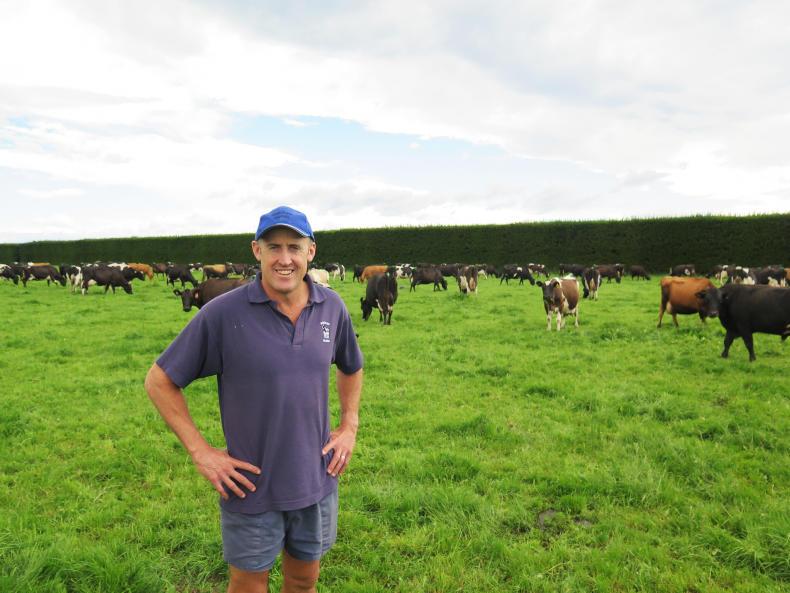
Greg Roadley, Ashburton, Canterbury, New Zealand
South Island, New Zealand
Greg and Rachel Roadley own three large dairy farms near Ashburton and are also shareholders in Grasslands, a corporate farming outfit based in New Zealand and Missouri. Along with the three Roadley farms in Ashburton, Greg and Rachel are shareholders in an equity partnership on two farms. The equity partners on those farms are their contract milkers and drystock managers along with two others.
“When we took on the equity partnership farm, Rachel and I weren’t necessarily looking to increase our own wealth, but we saw it as a good way of growing wealth for some of the people in our business,” Greg says.
The farm was purchased using a mix of bank debt and shareholder capital. Greg places a big emphasis on governance. The equity partnership has its own board of directors of which Greg is chairman. One of the equity partners is the managing director, who sits on the production committee, along with the contract-milkers who manage the farm.
“We have monthly meetings in which the managing director reports to the board of directors. The board decides strategy, the production committee and managing director decide how the farm is run. As chairman, I never get involved in that. Governance is about delivering the best outcome to shareholders.
“When deciding equity partners, it’s important that the people involved have the same values, visions and their expectations are aligned,” Greg says.
Employee turnover on the Roadley farms is tiny, with only one employee out of 18 leaving in the past two years. Most of the employees are from overseas. The roster is six days on and two days off. Greg says that houses and facilities on the farms are good, but that offering people a stable job and treating people with respect is more important.
The Roadley farms are extremely profitable, growing 18 to 20t/ha of grass and using no imported feed. When asked about the future challenges to the business, Greg said climate change was a risk but would probably work out OK because of the irrigators. He says that an increase in rainfall is predicted on the west coast, where Canterbury’s water comes from.
On nitrates, he says that matching grass demand to grass supply is the best way of reducing nitrogen leaching. He says using more break fences on winter crops, not milking at the shoulders of the year and improved irrigation technology should reduce nitrogen leaching.
He is more worried about carbon emissions and predicts that a carbon tax on kilos of milk solids will be introduced in the future. To counteract this, the Roadleys have just purchased 1,100 acres of dry land that they are going to plant forestry on. The expectation is that this land will offset carbon emissions on the dairy farms.
“The best way to deal with future challenges, be they environmental or financial, is to have a strong balance sheet and a low cost of production,” Greg says.
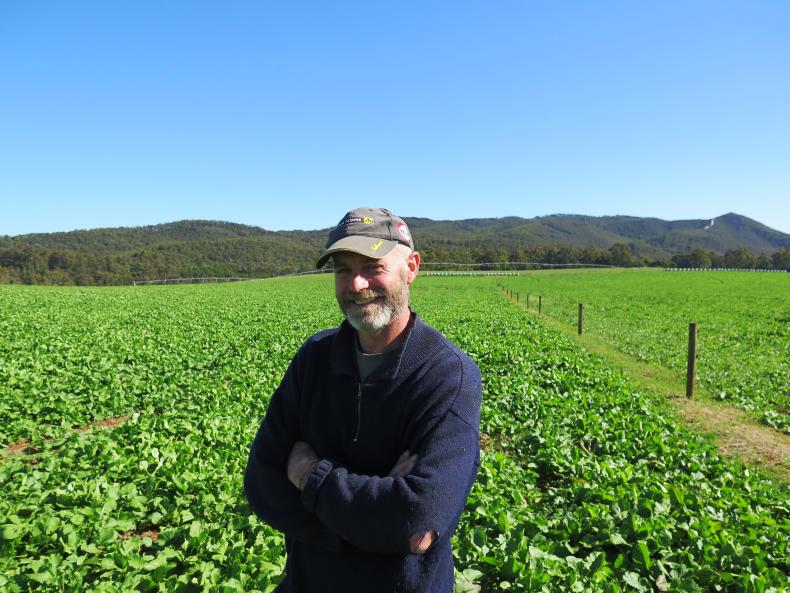
Matthew Gunningham, Tasmania, Australia.
Tasmania, Australia
Matthew moved to Tasmania from Bristol, England, in 2000. After managing a farm for a year, he and his wife Pip now own three dairy farms of about 800 cows each and are equity partners in four other dairy farms, three of which they manage. So in total, they are running six farms.
The Gunningham farming philosophy is the same as Colin Armer’s or Greg Roadley’s – it’s all about grass, and little or no supplement other than home-produced grass silage is fed. “Profit before production” is the mantra. All three farmers will reduce demand by going on long rotation lenghts and culling early before putting in supplement during late summer and autumn.
Not feeding supplement is now unusual in New Zealand and Australia. Most farms now have in-parlour feeders or a feed pad.
“The easiest way to farm is to put in meal when grass is scarce, spread nitrogen to make grass grow and top the fields after grazing to get a good residual. The problem with this is that your costs of production go up, you make less money most years and no money when milk price is bad, you work a lot harder and it’s actually bad for the environment,” Matthew says.
Care for the environment and improving animal welfare standards has led Matthew to try different things. Tasmania has a harsh climate with very dry summers and lots of pest attacks. He noticed after an outbreak of army worms last year that they ate the perennial ryegrass but didn’t eat clover. This year, he sowed a mixed-species sward of red and white clover, plantain, chicory and perennial ryegrass. If successful, he hopes to sow more of the farm in this to reduce nitrogen usage, be more drought-tolerant and pest-resistant.
He is also using Angus bulls as mop-up bulls across two of the his six farms on a trial basis.
“It’s a bit of a risk because our cows are small Jersey crossbreds. If we don’t have higher-than-normal empty rates and don’t have major calving difficulties it’s something I will consider switching all the herds to and try to move away from bobby calves.
North Island, New Zealand
When it comes to farming at scale, Colin Armer is top of the class. Colin and his wife Dale own a 37% share of Dairy Holdings Ltd, which owns 58 farms and 48,000 cows in the South Island of New Zealand. Dairy Holdings is valued at NZ$850m (€508m) and has a 50% debt-to-equity ratio.
In addition to their shareholding in Dairy Holdings, the Armers own 15 farms and about 14,000 cows in the North Island. Nine of the farms are around the Lake Taupo district, which is near the centre of the North Island.
Most of these farms were purchased over the last decade. Lake Taupo was the first region to introduce environmental restrictions on farming in New Zealand. Colin says new environmental rules are coming down the line like a train in New Zealand, and most farmers aren’t prepared.
“Ten years ago, I invested a lot of time and money into understanding the environmental footprint of dairy farming. As a result of that, I moved most of the Armer business to the most environmentally sensitive part of the country,” Colin says.
“When others were getting out because they didn’t think they’d be able to farm there, we moved in and bought land cheap.”
“Before we purchased, we ran the numbers through the computer model being used by the council [overseer], and realised that our system of grass-only dairy farming would work under the new rules.
“Not only that, but we would be well below the nitrate leaching limits set by the council.”
Since then, Colin has refined the system further.
“We used to spread 300kg/ha of nitrogen and produce 1,000kgMS/ha. Now we spread 80kg/ha of nitrogen and still produce 1,000kgMS/ha. As we have reduced our nitrogen usewe have increased our potash use, spreading 150kg K/ha/year and clover has been thriving.
“The other thing we have done is jump off the re-grassing [reseeding] treadmill. Last year, we only re-grassed 170ha out of 5,000ha. It’s like cocaine – you see a bit of a boost in growth initially but then it wears off fast.
“To maintain the boost, you have to keep re-grassing every year but I don’t think new varieties are any better than existing varieties,” Colin says.
Asked whether he is likely to buy more farms in the future, he said it is “inevitable”. The medium-term plan is to convert the farms to once-a-day milking to make his dairy farms more attractive places to work.
In terms of succession plans, the Armer’s wealth will be placed in a trust fund for their grandchildren’s education.

Greg Roadley, Ashburton, Canterbury, New Zealand
South Island, New Zealand
Greg and Rachel Roadley own three large dairy farms near Ashburton and are also shareholders in Grasslands, a corporate farming outfit based in New Zealand and Missouri. Along with the three Roadley farms in Ashburton, Greg and Rachel are shareholders in an equity partnership on two farms. The equity partners on those farms are their contract milkers and drystock managers along with two others.
“When we took on the equity partnership farm, Rachel and I weren’t necessarily looking to increase our own wealth, but we saw it as a good way of growing wealth for some of the people in our business,” Greg says.
The farm was purchased using a mix of bank debt and shareholder capital. Greg places a big emphasis on governance. The equity partnership has its own board of directors of which Greg is chairman. One of the equity partners is the managing director, who sits on the production committee, along with the contract-milkers who manage the farm.
“We have monthly meetings in which the managing director reports to the board of directors. The board decides strategy, the production committee and managing director decide how the farm is run. As chairman, I never get involved in that. Governance is about delivering the best outcome to shareholders.
“When deciding equity partners, it’s important that the people involved have the same values, visions and their expectations are aligned,” Greg says.
Employee turnover on the Roadley farms is tiny, with only one employee out of 18 leaving in the past two years. Most of the employees are from overseas. The roster is six days on and two days off. Greg says that houses and facilities on the farms are good, but that offering people a stable job and treating people with respect is more important.
The Roadley farms are extremely profitable, growing 18 to 20t/ha of grass and using no imported feed. When asked about the future challenges to the business, Greg said climate change was a risk but would probably work out OK because of the irrigators. He says that an increase in rainfall is predicted on the west coast, where Canterbury’s water comes from.
On nitrates, he says that matching grass demand to grass supply is the best way of reducing nitrogen leaching. He says using more break fences on winter crops, not milking at the shoulders of the year and improved irrigation technology should reduce nitrogen leaching.
He is more worried about carbon emissions and predicts that a carbon tax on kilos of milk solids will be introduced in the future. To counteract this, the Roadleys have just purchased 1,100 acres of dry land that they are going to plant forestry on. The expectation is that this land will offset carbon emissions on the dairy farms.
“The best way to deal with future challenges, be they environmental or financial, is to have a strong balance sheet and a low cost of production,” Greg says.

Matthew Gunningham, Tasmania, Australia.
Tasmania, Australia
Matthew moved to Tasmania from Bristol, England, in 2000. After managing a farm for a year, he and his wife Pip now own three dairy farms of about 800 cows each and are equity partners in four other dairy farms, three of which they manage. So in total, they are running six farms.
The Gunningham farming philosophy is the same as Colin Armer’s or Greg Roadley’s – it’s all about grass, and little or no supplement other than home-produced grass silage is fed. “Profit before production” is the mantra. All three farmers will reduce demand by going on long rotation lenghts and culling early before putting in supplement during late summer and autumn.
Not feeding supplement is now unusual in New Zealand and Australia. Most farms now have in-parlour feeders or a feed pad.
“The easiest way to farm is to put in meal when grass is scarce, spread nitrogen to make grass grow and top the fields after grazing to get a good residual. The problem with this is that your costs of production go up, you make less money most years and no money when milk price is bad, you work a lot harder and it’s actually bad for the environment,” Matthew says.
Care for the environment and improving animal welfare standards has led Matthew to try different things. Tasmania has a harsh climate with very dry summers and lots of pest attacks. He noticed after an outbreak of army worms last year that they ate the perennial ryegrass but didn’t eat clover. This year, he sowed a mixed-species sward of red and white clover, plantain, chicory and perennial ryegrass. If successful, he hopes to sow more of the farm in this to reduce nitrogen usage, be more drought-tolerant and pest-resistant.
He is also using Angus bulls as mop-up bulls across two of the his six farms on a trial basis.
“It’s a bit of a risk because our cows are small Jersey crossbreds. If we don’t have higher-than-normal empty rates and don’t have major calving difficulties it’s something I will consider switching all the herds to and try to move away from bobby calves.






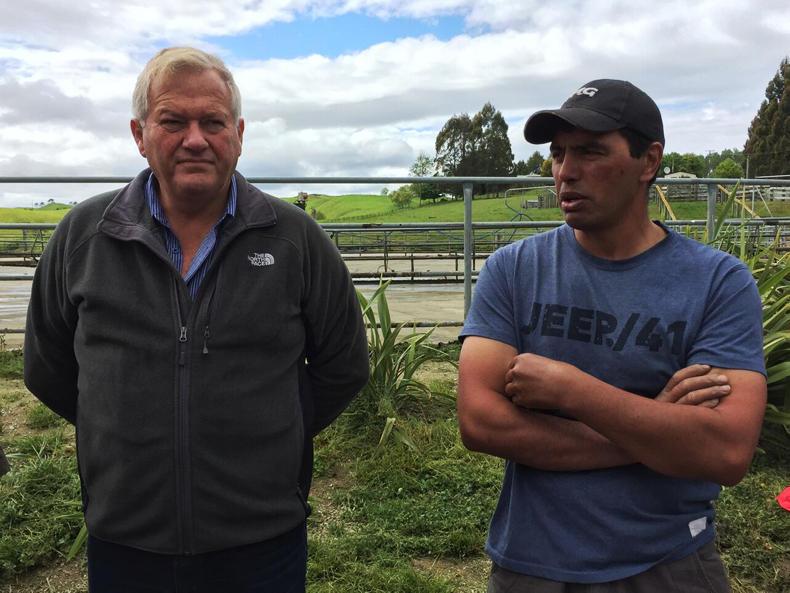
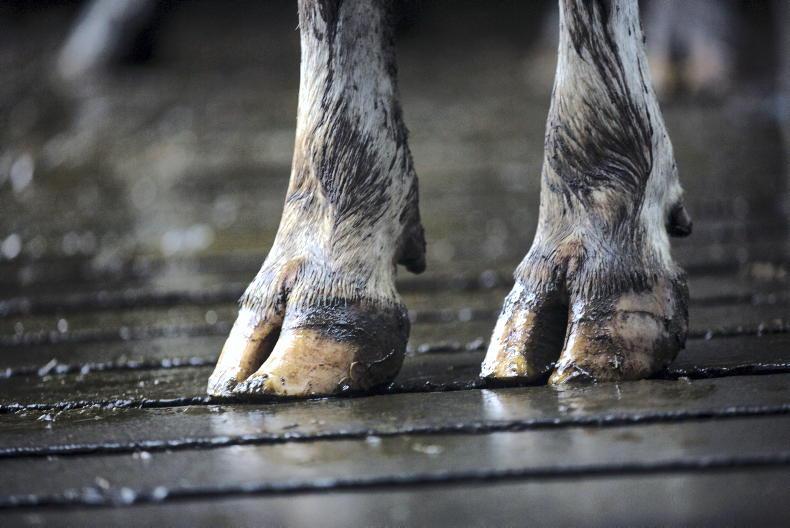

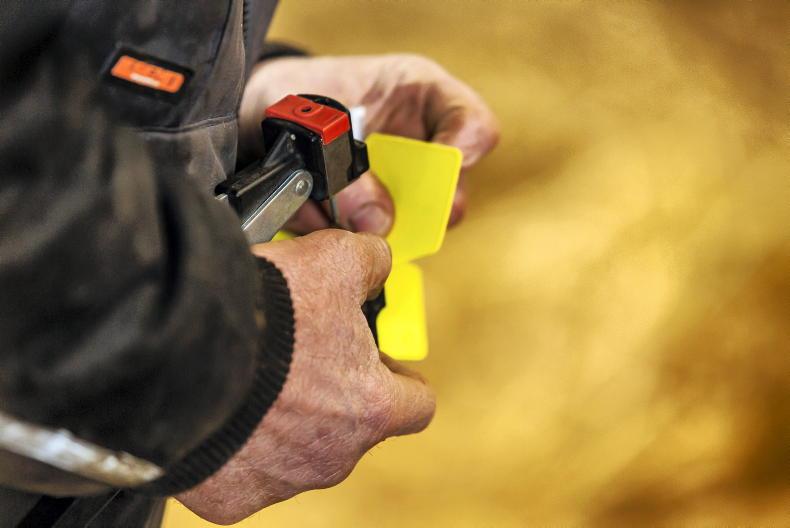
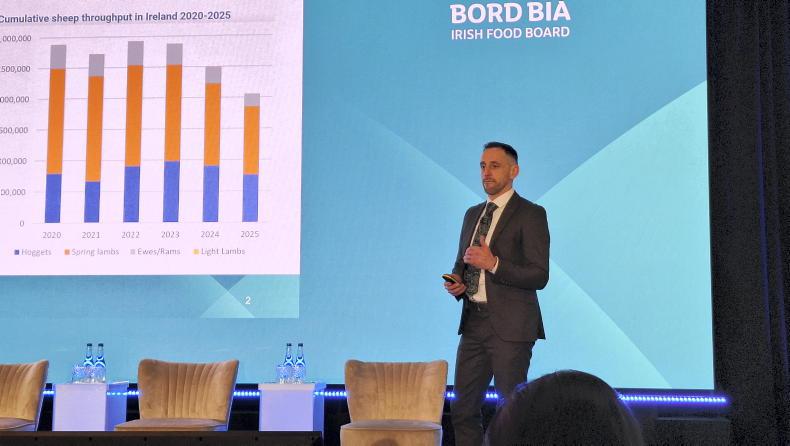

SHARING OPTIONS